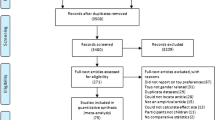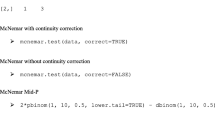Abstract
Computational morphometry of magnetic resonance images represents a powerful tool for studying macroscopic differences in human brains. In the present study (N participants = 829), we combined different techniques and measures of brain morphology to investigate one of the most compelling topics in neuroscience: sexual dimorphism in human brain structure. When accounting for overall larger male brains, results showed limited sex differences in gray matter volume (GMV) and surface area. On the other hand, we found larger differences in cortical thickness, favoring both males and females, arguably as a result of region-specific differences. We also observed higher values of fractal dimension, a measure of cortical complexity, for males versus females across the four lobes. In addition, we applied source-based morphometry, an alternative method for measuring GMV based on the independent component analysis. Analyses on independent components revealed higher GMV in fronto-parietal regions, thalamus and caudate nucleus for females, and in cerebellar- temporal cortices and putamen for males, a pattern that is largely consistent with previous findings.


Similar content being viewed by others
Availability of data and material
The data are available through the Human Connectome Project (https://www.humanconnectome.org/).
Code availability
Not applicable.
References
Amft M, Bzdok D, Laird AR, Fox PT, Schilbach L, Eickhoff SB (2015) Definition and characterization of an extended social-affective default network. Brain Struct Funct 220(2):1031–1049
Bao AM, Swaab DF (2010) Sex differences in the brain, behavior, and neuropsychiatric disorders. Neuroscientist 16(5):550–565. https://doi.org/10.1177/1073858410377005
Bell AJ, Sejnowski TJ (1995) An information-maximization approach to blind separation and blind deconvolution. Neural Comput 7(6):1129–1159. https://doi.org/10.1162/neco.1995.7.6.1129
Biswal BB, Mennes M, Zuo XN, Gohel S, Kelly C, Smith SM, Milham MP (2010) Toward discovery science of human brain function. Proc Natl Acad Sci 107(10):4734–4739
Caligiore D, Pezzulo G, Baldassarre G, Bostan AC, Strick PL, Doya K, Helmich RC, Dirkx M, Houk J, Jörntell H, Lago-Rodriguez A, Galea JM, Miall RC, Popa T, Kishore A, Verschure PFMJ, Zucca R, Herreros I (2017) Consensus paper: towards a systems-level view of cerebellar function: the interplay between cerebellum, basal ganglia, and cortex. Cerebellum 16(1):203–229. https://doi.org/10.1007/s12311-016-0763-3
Chen X, Sachdev PS, Wen W, Anstey KJ (2007) Sex differences in regional gray matter in healthy individuals aged 44–48 years: a voxel-based morphometric study. Neuroimage 36(3):691–699. https://doi.org/10.1016/j.neuroimage.2007.03.063
Destrieux C, Fischl B, Dale A, Halgren E (2010) Automatic parcellation of human cortical gyri and sulci using standard anatomical nomenclature. Neuroimage 53(1):1–15
Di Ieva A, Grizzi F, Jelinek H, Pellionisz AJ, Losa GA (2014) Fractals in the neurosciences, part I: General principles and basic neurosciences. Neuroscientist 20(4):403–417. https://doi.org/10.1177/1073858413513927
Di Ieva A, Esteban FJ, Grizzi F, Klonowski W, Martín-Landrove M (2015) Fractals in the neurosciences, part II: clinical applications and future perspectives. Neuroscientist 21(1):30–43. https://doi.org/10.1177/1073858413513928
Duerden EG, Chakravarty MM, Lerch JP, Taylor MJ (2020) Sex-based differences in cortical and subcortical development in 436 individuals aged 4–54 Years. Cereb Cortex 30(5):2854–2866. https://doi.org/10.1093/cercor/bhz279
Escorial S, Román FJ, Martínez K, Burgaleta M, Karama S, Colom R (2015) Sex differences in neocortical structure and cognitive performance: a surface-based morphometry study. Neuroimage 104:355–365. https://doi.org/10.1016/j.neuroimage.2014.09.035
Fischl B (2012) FreeSurfer Neuroimage 62(2):774–781
Gaser C, Dahnke R (2016) CAT-a computational anatomy toolbox for the analysis of structural MRI data. Hbm 2016:336–348
Glasser, M. F., Sotiropoulos, S. N., Wilson, J. A., Coalson, T. S., Fischl, B., Andersson, J. L., & Wu-Minn HCP Consortium (2013) The minimal preprocessing pipelines for the Human Connectome Project. Neuroimage 80:105–124
Gupta CN, Turner JA, Calhoun VD (2019) Source-based morphometry: a decade of covarying structural brain patterns. Brain Struct Funct 224(9):3031–3044. https://doi.org/10.1007/s00429-019-01969-8
Gur RC, Gur RE (2017) Complementarity of sex differences in brain and behavior: From laterality to multimodal neuroimaging. J Neurosci Res 95(1–2):189–199. https://doi.org/10.1002/jnr.23830
Im K, Lee JM, Lee J, Shin YW, Kim IY, Kwon JS, Kim SI (2006) Gender difference analysis of cortical thickness in healthy young adults with surface-based methods. Neuroimage 31(1):31–38. https://doi.org/10.1016/j.neuroimage.2005.11.042
Jenkinson M, Beckmann CF, Behrens TE, Woolrich MW, Smith SM (2012) Fsl. Neuroimage 62(2):782–790
Kalmanti E, Maris TG (2007) Fractal dimension as an index of brain cortical changes throughout life. Vivo 21(4):641–646
Kašpárek T, Mareček R, Schwarz D, Přikryl R, Vaníček J, Mikl M, Češková E (2010) Source-based morphometry of gray matter volume in men with first-episode schizophrenia. Hum Brain Mapp 31(2):300–310. https://doi.org/10.1002/hbm.20865
King RD, George AT, Jeon T, Hynan LS, Youn TS, Kennedy DN, Dickerson B (2009) Characterization of atrophic changes in the cerebral cortex using fractal dimensional analysis. Brain Imaging Behav 3(2):154–166. https://doi.org/10.1007/s11682-008-9057-9
King RD, Brown B, Hwang M, Jeon T, George AT (2010) Fractal dimension analysis of the cortical ribbon in mild Alzheimer’s disease. Neuroimage 53(2):471–479. https://doi.org/10.1016/j.neuroimage.2010.06.050
Koziol LF, Budding D, Andreasen N, D’Arrigo S, Bulgheroni S, Imamizu H, Ito M, Manto M, Marvel C, Parker K, Pezzulo G, Ramnani N, Riva D, Schmahmann J, Vandervert L, Yamazaki T (2014) Consensus paper: The cerebellum’s role in movement and cognition. Cerebellum 13(1):151–177. https://doi.org/10.1007/s12311-013-0511-x
Li YO, Adali T, Calhoun VD (2007) Estimating the number of independent components for functional magnetic resonance imaging data. Hum Brain Mapp 28(11):1251–1266. https://doi.org/10.1002/hbm.20359
Lisofsky N, Riediger M, Gallinat J, Lindenberger U, Kühn S (2016) Hormonal contraceptive use is associated with neural and affective changes in healthy young women. Neuroimage 134:597–606
Lombardo MV, Ashwin E, Auyeung B, Chakrabarti B, Taylor K, Hackett G, Baron-Cohen S (2012) Fetal testosterone influences sexually dimorphic gray matter in the human brain. J Neurosci 32(2):674–680
Lotze M, Domin M, Gerlach FH, Gaser C, Lueders E, Schmidt CO, Neumann N (2019) Novel findings from 2,838 adult brains on sex differences in gray matter brain volume. Sci Rep 9(1):1–7. https://doi.org/10.1038/s41598-018-38239-2
Luders E, Narr KL, Thompson PM, Rex DE, Jancke L, Steinmetz H, Toga AW (2004) Gender differences in cortical complexity. Nat Neurosci 7(8):799–800. https://doi.org/10.1038/nn1277
Luders E, Narr KL, Thompson PM, Rex DE, Woods RP, DeLuca H, Jancke L, Toga AW (2006) Gender effects on cortical thickness and the influence of scaling. Hum Brain Mapp 27(4):314–324. https://doi.org/10.1002/hbm.20187
Luders E, Gaser C, Narr KL, Toga AW (2009) Why sex matters: Brain size independent differences in gray matter distributions between men and women. J Neurosci 29(45):14265–14270. https://doi.org/10.1523/JNEUROSCI.2261-09.2009
Lv B, Li J, He H, Li M, Zhao M, Ai L, Wang Z (2010) Gender consistency and difference in healthy adults revealed by cortical thickness. Neuroimage 53(2):373–382
Madan CR, Kensinger EA (2016) Cortical complexity as a measure of age-related brain atrophy. Neuroimage 134:617–629. https://doi.org/10.1016/j.neuroimage.2016.04.029
Mandelbrot B (1967) How long is the coast of britain? statistical self-similarity and fractional dimension. Sci 156(3775):636–638. https://doi.org/10.1126/science.156.3775.636
Marchand WR, Lee JN, Thatcher JW, Hsu EW, Rashkin E, Suchy Y, Chelune G, Starr J, Barbera SS (2008) Putamen coactivation during motor task execution. NeuroReport 19(9):957–960. https://doi.org/10.1097/WNR.0b013e328302c873
Mars RB, Neubert FX, Noonan MP, Sallet J, Toni I, Rushworth MF (2012) On the relationship between the “default mode network” and the “social brain.” Front Hum Neurosci 6:189
McCarthy MM, Arnold AP (2011) Reframing sexual differentiation of the brain. Nat Neurosci 14(6):677–683. https://doi.org/10.1038/nn.2834
McEwen BS, Milner TA (2017) Understanding the broad influence of sex hormones and sex differences in the brain. J Neurosci Res 95(1–2):24–39
Moreno-Briseño P, Díaz R, Campos-Romo A, Fernandez-Ruiz J (2010) Sex-related differences in motor learning and performance. Behav Brain Funct 6:2–5. https://doi.org/10.1186/1744-9081-6-74
Mustafa N, Ahearn TS, Waiter GD, Murray AD, Whalley LJ, Staff RT (2012) Brain structural complexity and life course cognitive change. Neuroimage 61(3):694–701. https://doi.org/10.1016/j.neuroimage.2012.03.088
Neufang S, Specht K, Hausmann M, Güntürkün O, Herpertz-Dahlmann B, Fink GR, Konrad K (2009) Sex differences and the impact of steroid hormones on the developing human brain. Cereb Cortex 19(2):464–473
Panizzon MS, Fennema-Notestine C, Eyler LT, Jernigan TL, Prom-Wormley E, Neale M, Kremen WS (2009) Distinct genetic influences on cortical surface area and cortical thickness. Cereb Cortex 19(11):2728–2735
Peper JS, Brouwer RM, Schnack HG, van Baal GC, van Leeuwen M, van den Berg SM, Pol HEH (2009) Sex steroids and brain structure in pubertal boys and girls. Psychoneuroendocrinology 34(3):332–342
Pletzer B, Kronbichler M, Aichhorn M, Bergmann J, Ladurner G, Kerschbaum HH (2010) Menstrual cycle and hormonal contraceptive use modulate human brain structure. Brain Res 1348:55–62
Raichle ME (2015) The brain’s default mode network. Annu Rev Neurosci 38:433–447
Raichle ME, MacLeod AM, Snyder AZ, Powers WJ, Gusnard DA, Shulman GL (2001) A default mode of brain function. Proc Natl Acad Sci 98(2):676–682
Raznahan A, Shaw P, Lalonde F, Stockman M, Wallace GL, Greenstein D, Giedd JN (2011) How does your cortex grow? J Neurosci 31(19):7174–7177
Rijpkema M, Everaerd D, van der Pol C, Franke B, Tendolkar I, Fernández G (2012) Normal sexual dimorphism in the human basal ganglia. Hum Brain Mapp 33(5):1246–1252. https://doi.org/10.1002/hbm.21283
Ritchie SJ, Cox SR, Shen X, Lombardo MV, Reus LM, Alloza C, Harris MA, Alderson HL, Hunter S, Neilson E, Liewald DCM, Auyeung B, Whalley HC, Lawrie SM, Gale CR, Bastin ME, McIntosh AM, Deary IJ (2018) Sex differences in the adult human brain: evidence from 5216 UK biobank participants. Cereb Cortex 28(8):2959–2975. https://doi.org/10.1093/cercor/bhy109
Ruigrok ANV, Salimi-Khorshidi G, Lai MC, Baron-Cohen S, Lombardo MV, Tait RJ, Suckling J (2014) A meta-analysis of sex differences in human brain structure. Neurosci Biobehav Rev 39:34–50. https://doi.org/10.1016/j.neubiorev.2013.12.004
Schäfer, T., & Ecker, C. (2020). fsbrain: an R package for the visualization of structural neuroimaging data. bioRxiv.
Segall JM, Allen EA, Jung RE, Erhardt EB, Arja SK, Kiehl K, Calhoun VD (2012) Correspondence between structure and function in the human brain at rest. Front Neuroinform 6(MARCH):1–17
Sowell ER, Peterson BS, Kan E, Woods RP, Yoshii J, Bansal R, Xu D, Zhu H, Thompson PM, Toga AW (2007) Sex differences in cortical thickness mapped in 176 healthy individuals between 7 and 87 years of age. Cereb Cortex 17(7):1550–1560
Van Essen, D. C., Smith, S. M., Barch, D. M., Behrens, T. E., Yacoub, E., Ugurbil, K., & Wu-Minn HCP Consortium (2013) The WU-Minn human connectome project: an overview. Neuroimage 80:62–79
Vanston JE, Strother L (2017) Sex differences in the human visual system. J Neurosci Res 95(1–2):617–625
Votinov M, Goerlich KS, Puiu AA, Smith E, Nickl-Jockschat T, Derntl B, Habel U (2021) Brain structure changes associated with sexual orientation. Sci Rep 11(1):1–10
Vuoksimaa E, Panizzon MS, Chen CH, Fiecas M, Eyler LT, Fennema-Notestine C, Kremen WS (2015) The genetic association between neocortical volume and general cognitive ability is driven by global surface area rather than thickness. Cereb Cortex 25(8):2127–2137
Wierenga LM, Langen M, Oranje B, Durston S (2014) Unique developmental trajectories of cortical thickness and surface area. Neuroimage 87:120–126
Wierenga, L. M., Doucet, G. E., Dima, D., Agartz, I., Aghajani, M., Akudjedu, T. N., & Wittfeld, K. (2020). Greater male than female variability in regional brain structure across the lifespan. Human brain mapping.
Xu L, Groth KM, Pearlson G, Schretlen DJ, Calhoun VD (2009) Source-based morphometry: The use of independent component analysis to identify gray matter differences with application to schizophrenia. Hum Brain Mapp 30(3):711–724. https://doi.org/10.1002/hbm.20540
Yotter RA, Nenadic I, Ziegler G, Thompson PM, Gaser C (2011) Local cortical surface complexity maps from spherical harmonic reconstructions. Neuroimage 56(3):961–973. https://doi.org/10.1016/j.neuroimage.2011.02.007
Acknowledgements
Data were provided by the Human Connectome Project, WU-Minn Consortium (Principal Investigators: David Van Essen and Kamil Ugurbil; 1U54MH091657) funded by the 16 NIH Institutes and Centers that support the NIH Blueprint for Neuroscience Research; and by the McDonnell Center for Systems Neuroscience at Washington University.
Funding
This research did not receive any specific grant from funding agencies in the public, commercial, or not-for-profit sectors.
Author information
Authors and Affiliations
Corresponding author
Ethics declarations
Conflicts of interest
The authors declare no conflict of interest.
Ethics approval
The Washington University Institutional Review Board (IRB # 201,204,036) approved all procedures for the Human Connectome Project (HCP).
Consent to participate
Written informed consent was obtained from all participants.
Consent for publication
Written informed consent for publication was obtained from all participants.
Additional information
Publisher's Note
Springer Nature remains neutral with regard to jurisdictional claims in published maps and institutional affiliations.
Supplementary Information
Below is the link to the electronic supplementary material.
Rights and permissions
About this article
Cite this article
Del Mauro, G., Del Maschio, N., Sulpizio, S. et al. Investigating sexual dimorphism in human brain structure by combining multiple indexes of brain morphology and source-based morphometry. Brain Struct Funct 227, 11–21 (2022). https://doi.org/10.1007/s00429-021-02376-8
Received:
Accepted:
Published:
Issue Date:
DOI: https://doi.org/10.1007/s00429-021-02376-8




